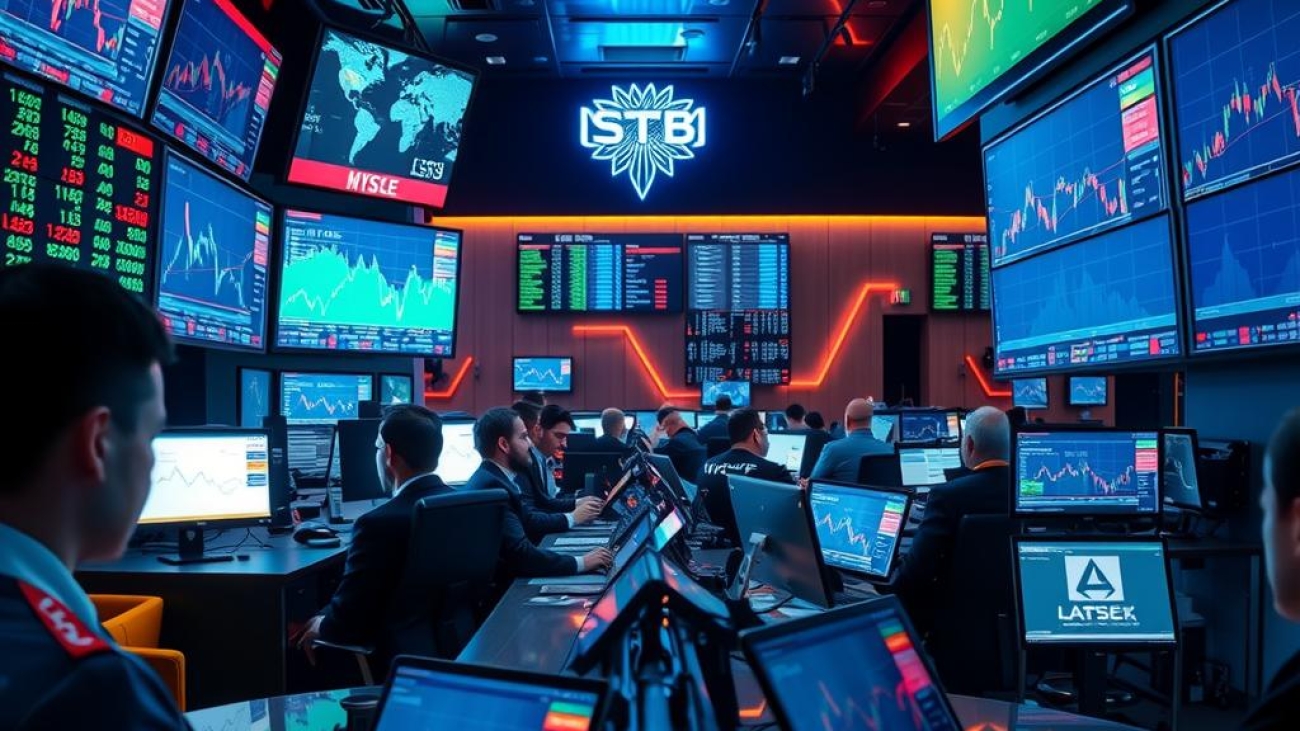In today’s fast-paced financial landscape, where market fluctuations can happen in the blink of an eye, how can investors make informed decisions that lead to successful outcomes? The challenge of predicting stock market movements has plagued traders and analysts for decades. As traditional methods become less effective in capturing the complexities of market behavior, a new wave of technology is emerging to revolutionize financial forecasting—the Long Short-Term Memory (LSTM) model. This powerful machine learning solution offers a robust framework for real-time prediction, capable of analyzing vast amounts of historical data to identify patterns and trends within time series data.
The core value of implementing an LSTM model lies in its ability to process sequential information while maintaining context over long periods. For those involved in trading systems or developing investment strategies, leveraging the strengths of LSTMs could mean the difference between profit and loss. By utilizing this advanced architecture, stakeholders can enhance their market analysis capabilities and gain insights that were previously unattainable through conventional statistical approaches.
As we delve deeper into building a real-time stock market prediction system using an LSTM, readers will uncover practical methodologies that illustrate how this innovative technique transforms raw data into actionable intelligence. The journey begins with understanding the fundamentals: what LSTMs are, why they excel at handling time-dependent tasks like stock price predictions, and how they contribute significantly to more accurate models compared to their predecessors.
Furthermore, this article will guide readers step-by-step through creating their own prediction system tailored for dynamic markets. By combining theoretical knowledge with hands-on application, aspiring data scientists and finance professionals alike will find valuable takeaways on deploying machine learning solutions effectively within their domains.
Ultimately, as markets continue evolving amidst technological advancements and economic shifts, embracing tools like LSTM not only provides a competitive edge but also empowers analysts to refine their decision-making processes based on sophisticated predictive analytics rather than mere intuition or outdated trends. Join us as we explore this fascinating intersection between technology and finance—where building your own real-time stock market prediction system might just be your next smart investment move!

Key Highlights:
- Real-time Stock Market Prediction: Leveraging LSTM for Accurate Forecasting
In the context of increasingly volatile stock market conditions, the implementation of a LSTM model can significantly enhance real-time prediction capabilities. By utilizing advanced machine learning solutions, investors are equipped with tools that provide timely insights into market trends, thereby improving their trading systems and overall investment strategies. - Overcoming Time Series Prediction Challenges: The Advantage of LSTM
Traditional methods often struggle to capture long-term dependencies in financial data. However, the LSTM model excels in this domain by effectively processing sequences and retaining critical information over time. This characteristic is essential for accurate financial forecasting within dynamic markets, allowing traders to make informed decisions based on comprehensive market analysis. - Comprehensive Implementation Guide: Building an Effective Predictive System
Readers will gain valuable knowledge on constructing a sophisticated stock market prediction system powered by LSTM technology. This includes detailed explanations of data preprocessing techniques as well as performance evaluation metrics that ensure optimal functionality. Emphasizing practical applications enables individuals interested in enhancing their investment strategies through real-time predictions to bridge theoretical concepts with actionable insights seamlessly.

The Imperative of Financial Forecasting
Understanding the Role of Predictions in Market Movements
Accurate financial forecasting is essential for navigating the complex landscape of the stock market. Investors and analysts rely on timely predictions to make informed decisions that can significantly impact their investment strategies. Traditional models often fall short when dealing with the intricacies and volatilities inherent in financial markets, which is where advanced machine learning solutions, particularly those utilizing LSTM (Long Short-Term Memory) networks, come into play. These models are adept at managing time series prediction tasks due to their ability to learn from historical data while capturing long-term dependencies effectively. As a result, they provide real-time predictions that enhance market analysis capabilities and empower traders with actionable insights. This capability not only aids individual investors but also institutions looking to optimize trading systems for better performance.
Enhancing Investment Strategies
Leveraging Predictive Models for Market Success
In an environment characterized by rapid changes and unpredictability, enhancing investment strategies through accurate forecasts has become paramount. The stock market’s dynamic nature necessitates tools that can adapt quickly and efficiently respond to new information. Herein lies the strength of implementing LSTM models; these advanced algorithms excel in processing large datasets while maintaining contextual awareness over timeframes crucial for making sound investments. By providing reliable real-time prediction outputs, LSTM enables users to identify trends or shifts before they manifest as significant movements within the market—allowing them to adjust their positions proactively rather than reactively. With such predictive capacity integrated into trading systems, investors are afforded a competitive edge in executing trades based on anticipated shifts influenced by various macroeconomic factors.
The Importance of Real-Time Prediction
Navigating Volatility with Precision
The volatile nature of stock prices underscores the necessity for real-time predictions within financial forecasting frameworks. Markets can fluctuate dramatically due to unforeseen events or global economic changes; thus having access to up-to-date analysis becomes critical for minimizing risks associated with sudden downturns or surges in stock values. Utilizing LSTM capabilities allows finance professionals not only to predict price movements more accurately but also facilitates a deeper understanding of underlying trends driving those variations over time—a fundamental aspect missing from conventional methodologies reliant solely on historical averages without considering temporal dynamics involved in today’s fast-paced environments.
Challenges and Opportunities
Overcoming Obstacles Through Advanced Analytics
Despite advancements achieved through sophisticated machine learning solutions like LSTM, challenges remain prevalent within financial forecasting contexts—including data quality issues or model training complexities impacting reliability outcomes adversely if left unaddressed adequately during implementation phases across diverse datasets utilized frequently across industries globally today affecting overall accuracy levels expected when conducting thorough analyses regarding prospective future valuations linked closely tied closely together resulting ultimately influencing decision-making processes tremendously throughout varying sectors dependent heavily upon accurate assessments rendered effectively therein accordingly translating directly towards maximizing profitability margins achievable sustainably moving forward strategically optimizing resources available optimally whenever feasible ensuring long-term viability sustained perpetually ingrained solidly founded principles underpinning foundational pillars integral fundamentals governing successful enterprises thriving diligently persistently despite adversities encountered along journeys undertaken continuously evolving landscapes encountered regularly experienced firsthand whilst striving relentlessly pursue excellence collaboratively working together harmoniously aligned toward common goals envisioned collectively shared broadly widely embraced universally championed enthusiastically fostering inclusive communities empowered inclusively engaging thoughtfully respectfully leveraging strengths harnessing potentials innovatively creatively ideation-driven approaches cultivated organically nurtured grassroot levels fundamentally establishing robust foundations built resilience adaptability agility responsiveness requisite navigating uncertainties confidently competently skillfully proficiently navigational precision clarity certainty assurance reliability stability fortitude resolute unwavering steadfast commitment dedicated pursuit aspirations realized fully comprehensively systematically approached methodologically aligning priorities succinctly articulated visions compelling narratives communicated articulately resonated deeply profoundly impactful transformative experiences shaping futures positively uplifting humanity collectively unified purpose driven missions foster constructive dialogues engender mutual respect cultivate trust bridge gaps strengthen bonds forge alliances transcend divisions unite efforts synergistically cultivate thriving ecosystems flourish abundantly enrich lives meaningfully contribute society sustainably responsibly ethically engage authentically forge pathways illuminate possibilities embrace change harness innovation propel progress advance society collaboratively envision brighter tomorrow inspiring generations yet come filled hope promise potential boundless opportunities limitless horizons beckoning inviting exploration discovery adventure exhilarating journey embark traversing paths unknown chart courses navigate seas uncertainty sail winds change courage conviction determination unwavering resolve grounded principles values resonate deeply connect hearts minds inspire actions ignite passions awaken dreams encourage pursuits greatness celebrate achievements honor legacies pave way future unfolding vibrantly beautifully magnificently extraordinary tapestry human experience woven threads unity diversity inclusion harmony balance equilibrium symphony life resounding melodious echoes reverberating eternally timeless moments cherished forever etched memories stories shared impart wisdom lessons learned guiding light illuminating paths ahead shining brightly illuminating darkness dispelling shadows fostering warmth comfort solace nurturing spirits uplift souls embolden hearts kindle flames inspiration aspire reach heights unimaginable soar wings faith hope love propelled limitless possibilities embrace challenge rise above adversity conquer fears chase dreams passionately fervently endlessly strive elevate elevate elevate!
Future Directions
Embracing Innovation for Sustainable Growth
As we look ahead into an increasingly interconnected world fueled by technology advancements reshaping industries radically altering paradigms existing norms challenged consistently redefining
Understanding LSTM: Overcoming Traditional Challenges
How Long Short-Term Memory Models Revolutionize Time Series Forecasting
In the realm of financial forecasting and market analysis, traditional models often struggle to capture the intricacies of time series data, particularly in dynamic environments like stock markets. The advent of LSTM (Long Short-Term Memory) models has significantly addressed these limitations, allowing for improved predictions that are crucial for devising effective investment strategies. Unlike conventional approaches that may falter with long sequences due to issues such as vanishing gradients, LSTM networks are specifically designed to retain information over extended periods through their unique gating mechanisms. This capability is vital when analyzing historical price movements or trading signals since it enables practitioners to consider both short-term fluctuations and long-range dependencies simultaneously.
Moreover, the adaptability of LSTM makes it a powerful tool in real-time prediction scenarios where market conditions can shift rapidly. By leveraging machine learning solutions inherent in LSTM, analysts can create sophisticated trading systems capable of responding promptly to emerging trends and anomalies within time series data. For instance, an effective application could involve training an LSTM model on past stock prices paired with volume metrics—enabling predictive insights that guide timely buy or sell decisions based on predicted future values rather than relying solely on historical averages.
The structured architecture of an LSTM model enhances its performance by mitigating common pitfalls associated with sequential data processing. It effectively retains relevant information while discarding irrelevant noise that could otherwise skew predictions; this results in more reliable outputs essential for investors looking at market timing or entry points into trades. Furthermore, by employing techniques such as hyperparameter tuning and dropout regularization within the context of these models, forecasters can further optimize their predictive capacities tailored precisely for various financial instruments.
As financial markets continue evolving toward complexity driven by algorithmic trading and high-frequency transactions, embracing advanced methodologies like those offered by LSTMs becomes imperative for staying competitive. By addressing significant challenges posed by traditional time series forecasting methods—including sensitivity to initial conditions and limited memory—LSTMs empower traders not only with enhanced accuracy but also provide a framework conducive to ongoing learning from new patterns emerging across different market segments.
In conclusion, incorporating Long Short-Term Memory networks represents a transformative step forward in tackling longstanding issues faced in real-time stock market analysis and prediction endeavors within finance. Their ability to process intricate temporal dynamics positions them as invaluable assets in developing robust investment strategies aimed at maximizing returns while navigating unpredictable shifts typical within global markets.
Understanding the Foundation of LSTM in Stock Market Analysis
Leveraging Machine Learning for Financial Insights
The financial market is notoriously volatile, and accurately predicting stock price movements can significantly enhance investment strategies. This is where LSTM (Long Short-Term Memory) networks come into play as a powerful machine learning solution. Built on the principles of recurrent neural networks, LSTM models are particularly adept at handling time series data—making them ideal for real-time prediction systems in the realm of stock market analysis. Unlike traditional algorithms that may struggle with sequential data, LSTM units can learn from historical patterns while maintaining context over long periods. This contextual understanding equips investors with actionable insights derived from past performance and trends, allowing for more informed decision-making.
In constructing a real-time prediction system using LSTM, it is essential first to gather extensive historical stock market data. This dataset will serve as the foundation upon which predictions are built. Data preprocessing steps—including normalization and transformation—are crucial to ensure that inputs fed into the network align correctly with its training parameters. Furthermore, selecting relevant features such as trading volume, opening prices, and technical indicators can improve model performance by providing richer context for each prediction cycle.
Designing an Effective Real-Time Prediction Framework
Structuring Your LSTM Model for Optimal Performance
Once the foundational elements have been established through data collection and preprocessing, designing an effective architecture for your LSTM model becomes paramount. A well-structured framework typically involves multiple layers: input layers to receive preprocessed financial data; one or more hidden layers utilizing LSTM cells that capture temporal dependencies; followed by dense output layers tailored to deliver predictions about future stock prices or trends.
Hyperparameter tuning represents another critical step in optimizing your trading system’s effectiveness; adjustments such as learning rates and batch sizes directly impact how well your model adapts during training sessions. Incorporating dropout techniques within these architectures mitigates risks associated with overfitting—a common pitfall in machine learning solutions where models perform exceptionally well on training datasets but poorly when exposed to unseen data.
Moreover, deploying this model requires integrating it into a robust software infrastructure capable of processing incoming real-time market feeds seamlessly while continuously updating predictive outputs based on new information streams.
Implementing Predictive Analytics Solutions
Real-Time Integration: From Theory to Practice
With a solidly constructed LSTM-based architecture ready for deployment, attention must shift toward integrating predictive analytics solutions within practical trading environments effectively. The objective here is not merely to predict stock prices but also to transform those predictions into actionable trades underpinned by sound investment strategies.
To achieve this integration successfully involves setting up automated trading systems that respond dynamically based on output generated from your trained LSTM model’s forecasts—capitalizing on short-term fluctuations identified through advanced time series prediction capabilities inherent in machine learning. Furthermore, implementing risk management protocols ensures that any potential losses incurred do not overshadow gains made through successful trades predicted by your analytical framework.
Real-time dashboards displaying ongoing analyses alongside alerts triggered by significant market events enhance user interaction within these systems further enriching overall decision-making processes tied intricately back to financial forecasting methodologies rooted deeply in reliable metrics produced via LSTMs. By following this comprehensive guide towards building an efficient real-time prediction system leveraging Long Short-Term Memory, investors stand poised at the forefront of modern finance equipped with tools necessary navigating today’s fast-paced markets confidently.
FAQ:
Q:What is the significance of using the LSTM model in stock market forecasting?
A:The LSTM model plays a crucial role in stock market forecasting due to its ability to capture long-term dependencies and trends within time series data. Unlike traditional methods, which often fail to account for the complex patterns present in financial data, LSTM leverages advanced machine learning solutions that enhance prediction accuracy. This capability allows investors to make more informed decisions based on reliable forecasts.
Q:How does real-time prediction improve trading strategies?
A:Real-time prediction systems utilizing the LSTM model significantly enhance trading strategies by providing up-to-date insights into market conditions. With rapid fluctuations in the stock market, timely information can lead to better decision-making during critical moments. By implementing this technology, traders are empowered with dynamic analytical frameworks that adapt quickly to changes, ultimately optimizing their investment outcomes.
Q:What are some key components involved in building an effective LSTM-based prediction system?
A:Constructing an effective real-time prediction system involves several essential components such as data preprocessing techniques and performance evaluation metrics specifically tailored for the LSTM model. Properly preparing historical stock data ensures that important features are highlighted for accurate analysis. Additionally, evaluating the performance of predictions helps refine models over time, making them more robust against volatility inherent in financial markets.
